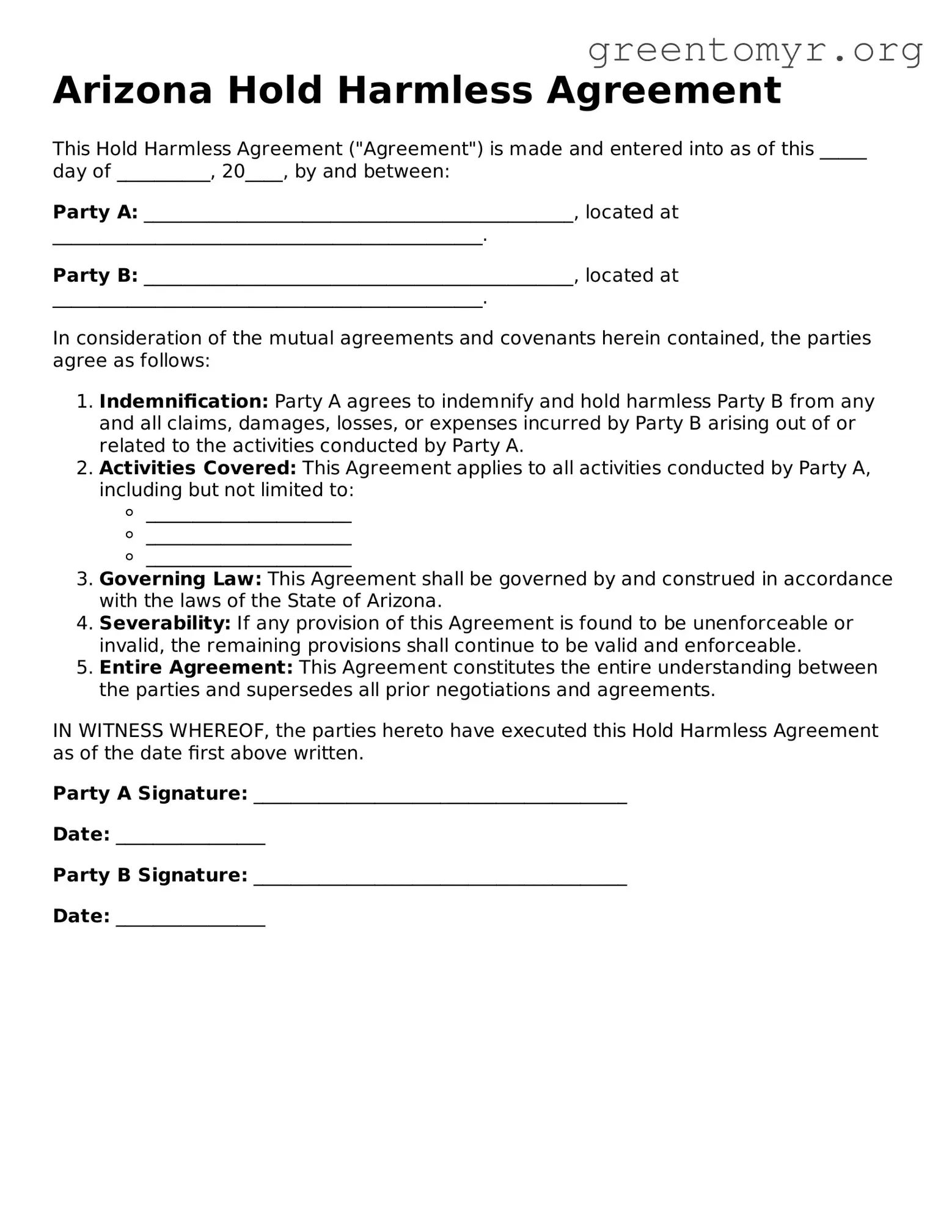What is an Arizona Hold Harmless Agreement?
An Arizona Hold Harmless Agreement is a legal document designed to protect one party from liability for any potential damages or injuries that might occur during an activity, event, or project. Essentially, it ensures that if one party is held responsible for any claims, the other party will take on that responsibility, thereby providing a form of legal protection.
Who typically uses a Hold Harmless Agreement?
This agreement is frequently used in varying situations where there is a potential for risk. Common users include:
-
Property owners allowing events on their land.
-
Contractors performing work on someone else's property.
-
Organizations hosting activities, such as sports leagues or festivals.
Is a Hold Harmless Agreement enforceable in Arizona?
Yes, Hold Harmless Agreements are generally enforceable in Arizona, provided they are clear and mutually agreed upon by both parties involved. However, they cannot be used to protect against gross negligence or willful misconduct. Courts generally provide some scrutiny, so the specifics matter.
What should be included in a Hold Harmless Agreement?
A comprehensive Hold Harmless Agreement should contain several key components:
-
The names of the parties involved.
-
A description of the activities or events covered by the agreement.
-
A clear statement of liability protection.
-
Signatures from all parties to indicate agreement.
Do I need a lawyer to create a Hold Harmless Agreement?
While it is not strictly necessary to hire a lawyer to draft a Hold Harmless Agreement, it is highly recommended. An attorney can provide valuable insights and ensure that the document meets all legal requirements, reducing the chance of disputes in the future.
Can a Hold Harmless Agreement be modified?
Yes, a Hold Harmless Agreement can be modified. All parties must agree to any changes, and it’s best to document these changes in writing, with signatures from each party. This protects everyone involved and clarifies any new terms.
What are the risks of not having a Hold Harmless Agreement?
If you choose not to use a Hold Harmless Agreement, you may face significant financial risks. Without this document, you could be held liable for any injuries or damages arising from activities on your property or during events you organize. Insurance may not cover all liabilities, leaving you vulnerable.
How can I ensure my Hold Harmless Agreement is effective?
To ensure your Hold Harmless Agreement is effective, consider the following steps:
-
Use clear and concise language.
-
Include all necessary details and expectations.
-
Have the agreement reviewed by an attorney.
-
Ensure all parties understand and agree to the terms before signing.
Where can I find a template for a Hold Harmless Agreement?
Templates for Hold Harmless Agreements are often available online through legal websites or at local legal aid offices. However, it is best to customize any template to fit your specific situation and seek legal advice when necessary to avoid pitfalls.
